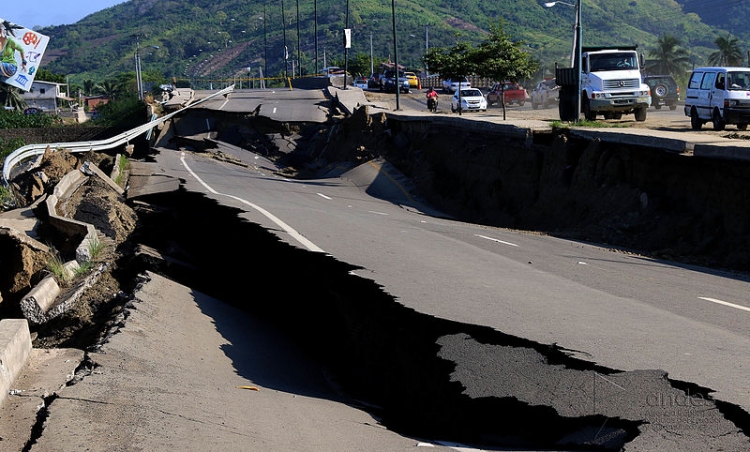One Year After the 7.8 Earthquake in Ecuador

After more than 600 deaths and 3,496 aftermaths of different magnitudes, Ecuador faced a hard year filled with struggle, and much-needed solidarity
After the 16 of April of 2016, several studies made by the Ecuadorian Geographical Institute found that Ecuador's topography changed significantly. According to the institute, the geography and ecosystem of the country altered. One of the biggest alterations is the change in the coordinates of the country, some structures moved for about a meter. As you go further away from the epicenter of the earthquake, the movement was about 1 centimeter.
In 2016 there were 46 earthquakes over the magnitude of 6.5 in the richter scale. The earthquake in Ecuador was the deadliest and the stronger was the one in Papua New Guinea of 7.9 magnitude.
Image Credit: Agencia de Noticias ANDES
Destruction and Reconstruction
The earthquake hit the coast side of the country in a town called Pedernales. There were around 15.000 wounded, 80.000 people lost their home and 67.000 buildings were damaged. Today, the cities are a mix of construction, empty terrain, and buildings that haven't been fixed since the catastrophe. The cost of the entire reconstruction is estimated to be 3,300 million U.S dollars. The president of Ecuador, Rafael Correa announced, 4 days after the earthquake, 5 different economic measures to help the victims and the country. The first was to increase the taxes from 12% to 14% for one year. Another one of Correa's measures would require people who earned over $1,000 per to give one day worth of salary for one month. For people who earn more than that amount the donation would elevate according to their income. For all these measurements, the government created a law called the Law of Solidarity. Additionally, this past March the Ecuadorian government received a credit of $1,000 million from the Chinese government, meant to go directly to those effected.
Image Credit: Giphy
Help
The national and international community turned their attention to Ecuador to help with donations of food, water, clothes, and money; many volunteered to go into the effected zones. The first country to send help was Venezuela. Spain was also one of the first countries to send help; they prepared a plane in Panama and other in Madrid to send with donations. Firemen from many parts of the world traveled to help the victims, as well as the Ecuadorian Red Cross, which mobilized over 1.200 volunteers, and the National Police who sent around 4.000 officers and 10.00 from the Air Force. Many civilians recollected donations and went to the cost on their own cars or trucks. The shelves in the stores were empty in the sections of caned food and water, showing the solidarity of the Ecuadorian people. One year after, the country continues to struggle with the unimaginable consequences of the devastating natural disaster.









